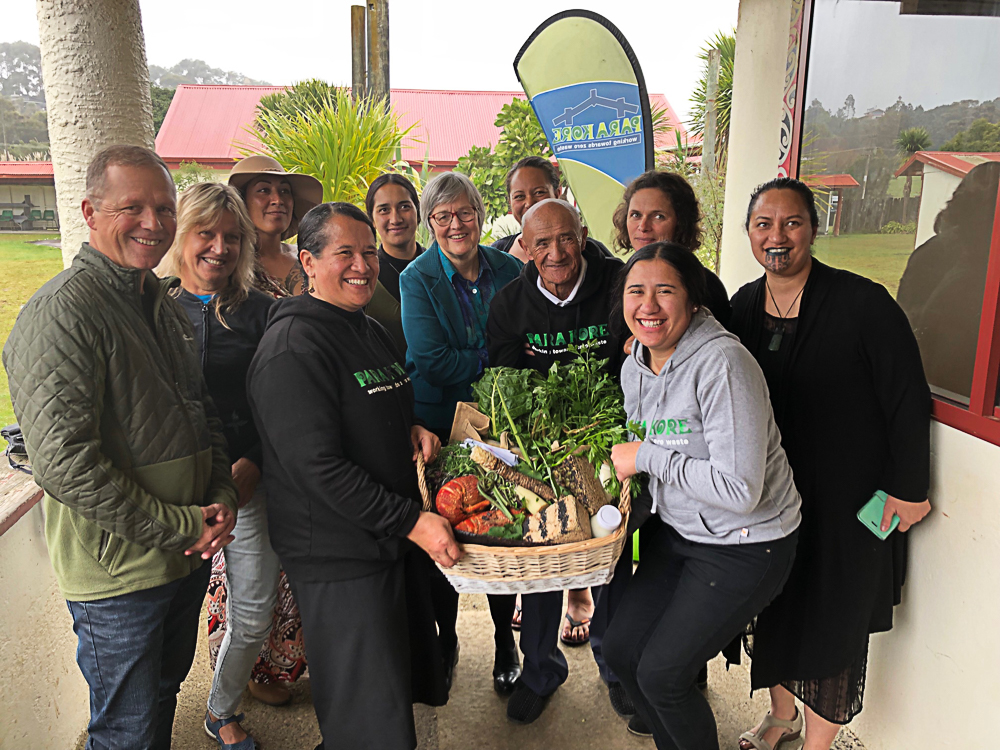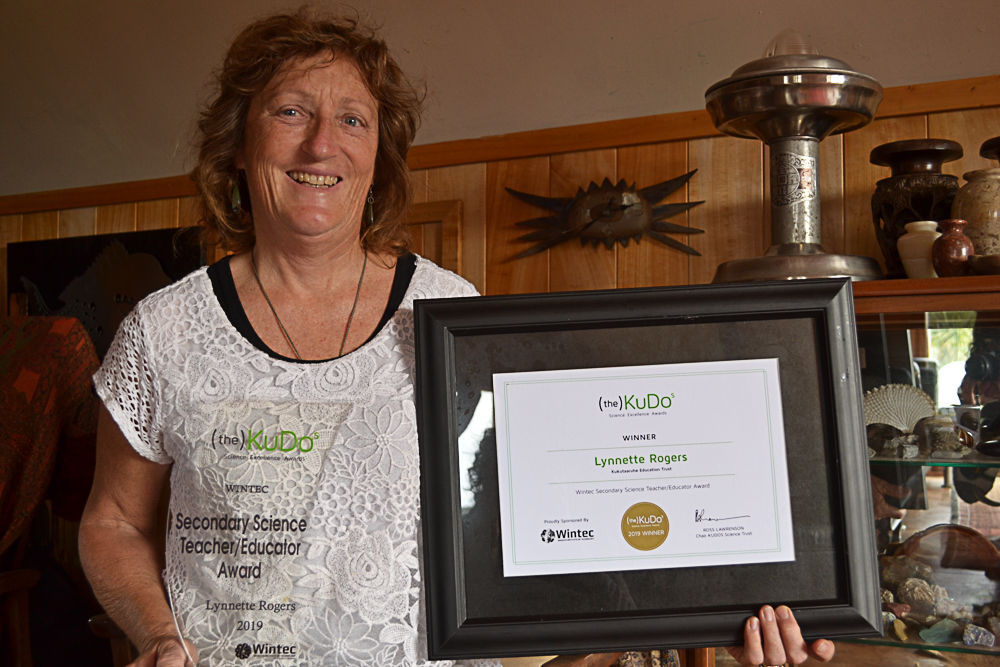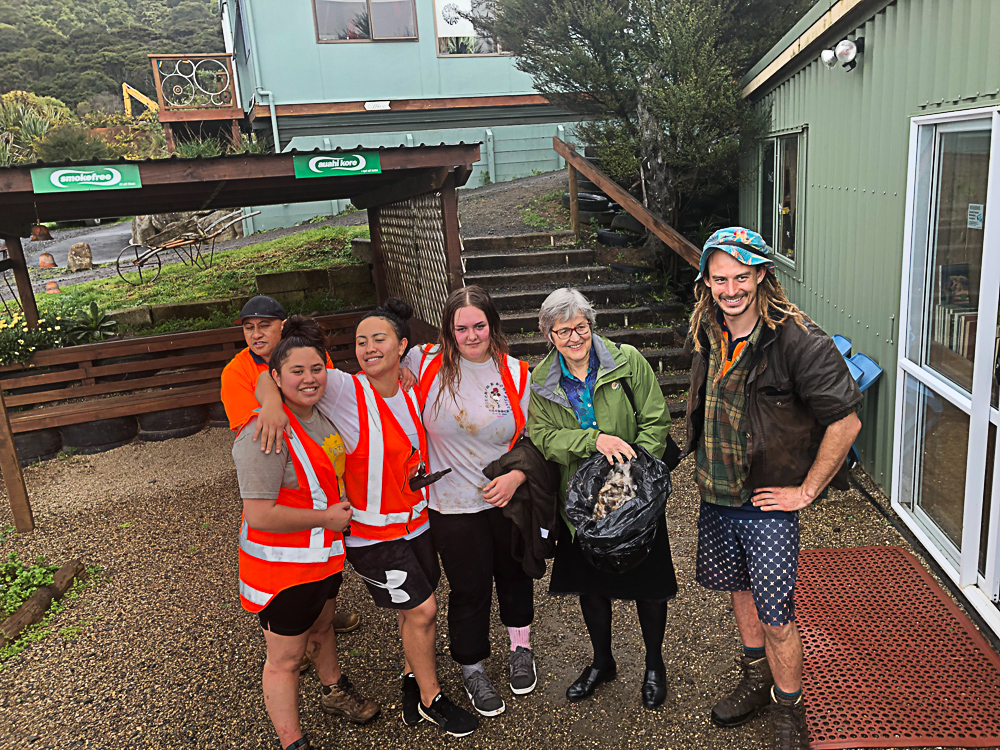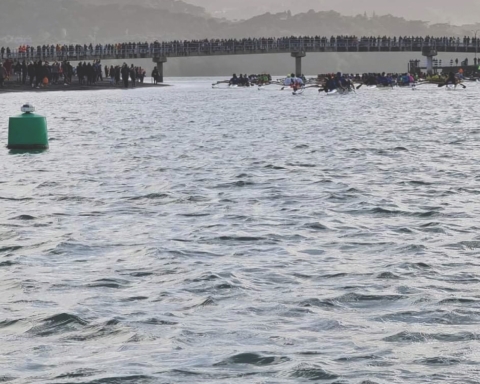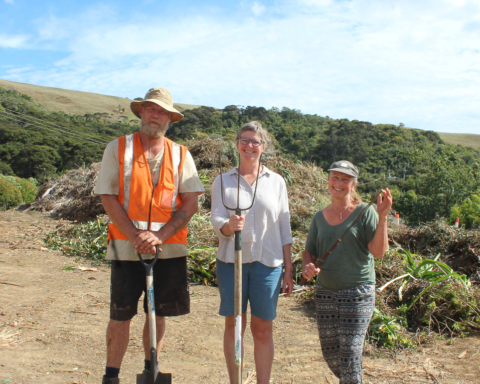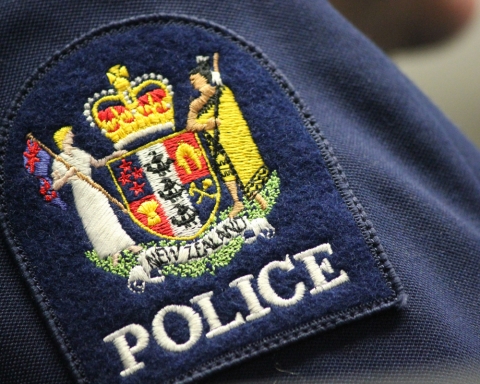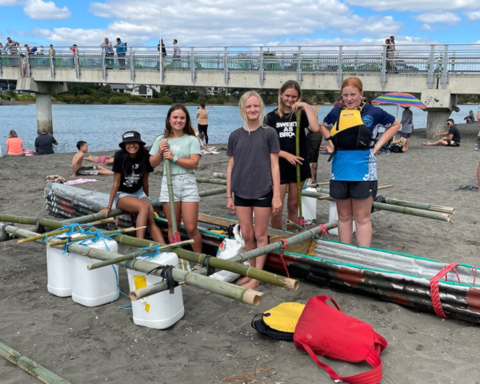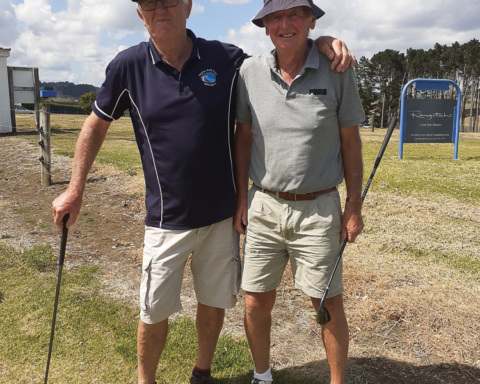Marae-based Para Kore programme, which started life in Whaingaroa, recently received a $528,000 grant from the Ministry for the Environment’s Waste Minimisation Fund (WMF).
Associate Environment Minister Eugenie Sage travelled to Raglan to make the announcement, which forms part of the government’s plan to tackle New Zealand’s long term waste problem.
“It’s great to mark ten years of the Para Kore flax-roots kaupapa, which has begun a revolution in how Māori communities minimise their waste,” Eugenie Sage says.
“Since its humble beginnings with volunteer pilot programmes running on three Waikato marae, Para Kore now has a vision for all marae to be working towards zero waste by 2025.”
Para Kore manager Jacqui Forbes says the grant has helped the zero waste programme expand to four new regions – Te Tai Tokerau (Northland), Wairoa, Maniapoto (Waikato/Waitomo) and Wairarapa.
“We have most of the North Island covered now and this grant helps with our strategy to bring Para Kore to all of New Zealand,” Jacqui says.
Para Kore is a not-for-profit Māori organisation and its zero waste kaupapa is based on whakapapa to Papatūānuku. An experienced and skilled team work regionally to deliver the Para Kore programme to marae and Māori communities.
Since 2008, Para Kore has expanded to operate in almost 400 marae, kohanga reo, kura or other Māori community organisations throughout much of the North Island.
The programme also provides education, wānanga, events and training in waste management, is responsible for more than 350 tonnes of waste being diverted from landfill and now employs 25, including 18 kaiārahi/regional waste advisors.
“Para Kore whānau are passionate and committed to achieving a zero waste Aotearoa by working together at their marae, the heart of their communities. And they do it through māturanga Māori, te reo me tikanga Māori – that is Māori knowledge and the Māori way of doing things,” Sage says.
The WMF is funded through the waste disposal or landfill levy that was introduced under the Waste Minimisation Act 2008. Fifty per cent of the money collected from the levy is distributed to councils to spend in accordance with their Waste Management and Minimisation Plans. The remainder (minus administration costs) is used for the WMF, which is managed by the Ministry for the Environment.
As well as expanding around the country, Jacqui says Para Kore is always looking at new avenues to reduce waste. They are currently working on cloth alternatives to disposable nappies to introduce into kohanga reo.
Alongside this announcement, Sage also announced a consultation document on the Ministry for the Environment’s proposal for regulated product stewardship for six priority products – tyres, electrical and electronic products, agrichemicals and their containers, refrigerants and other synthetic greenhouse gases, farm plastics, and packaging.
Jacqui says product stewardship would make producers responsible for their products at the end of life, and ensure the costs of proper waste management are paid by producers and consumers, not communities and the environment. For example, a consumer may pay extra to purchase a product but be able to dispose of the product for free. Or a refundable deposit may be included in the price of a beverage and this deposit returned when the empty container is taken to a collection point.
She is encouraging people to make submissions to www.mfe.govt.nz/consultations/priorityproducts by Friday 4 October at 5pm.
Janine Jackson
